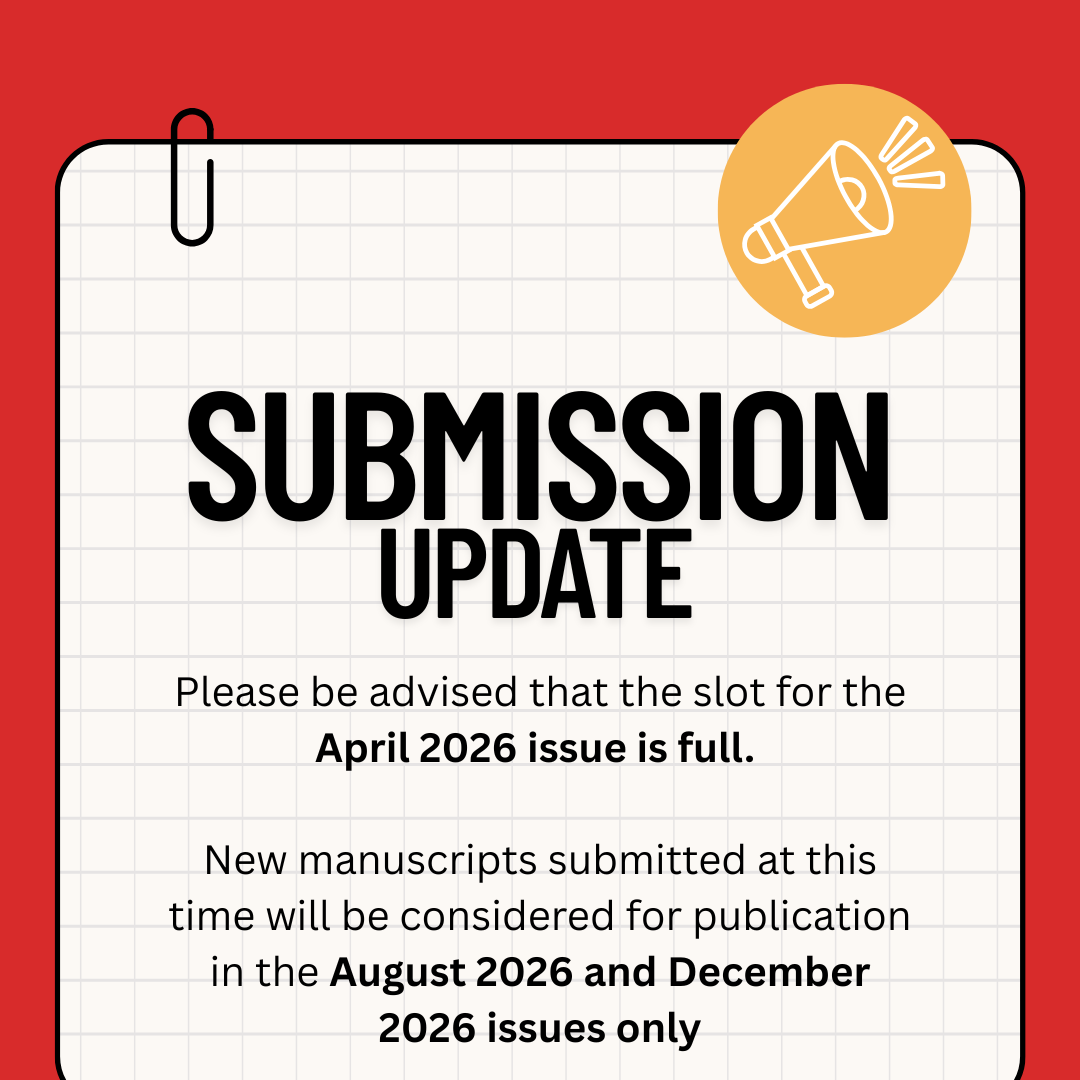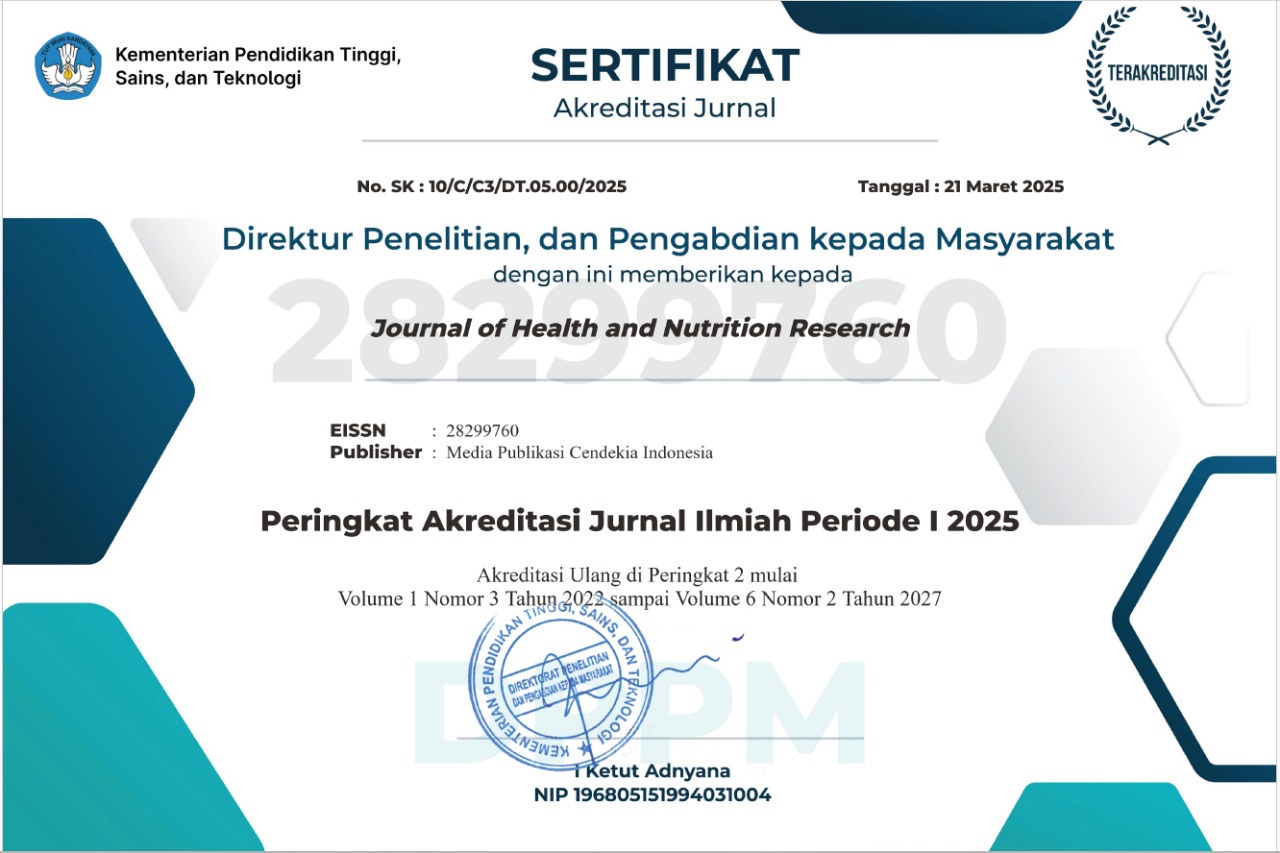Relationship Between Characteristics of Class 3 Inspired Patients With Service Satisfaction at Mokopido General Hospital, Tolitoli Regency
Keywords:
Service Quality, Patient Satisfaction, CharacteristicsAbstract
Patient satisfaction is a measure of service quality in hospitals. Satisfaction can be influenced by various aspects, one of which is patient characteristics. The purpose of the study was to analyze the relationship between the Characteristics of Class 3 Inpatients and Service Satisfaction at Mokopido General Hospital, Baolan, Tolitoli Regency. This type of quantitative research with a Cross-Sectional approach. The population in this study amounted to 1,178 patients; a sample of 93 patients was obtained using the slovin formula, while sampling was using the Proportionate Stratified Random Sampling technique. The analysis used was the Contingency Correlation with a value of =10%. The results of this study indicated a strong relationship between patient characteristics in the form of last education (p = 0.000) and age (p = 0.000) with service satisfaction. There is a strong relationship between age group, education and service satisfaction at Mokopido General Hospital, Baolan, Tolitoli Regency. Older respondents are more satisfied with their services. Respondents who are not educated are more satisfied with the services received. Suggestions for the empathy dimension are expected that the doctor or nurse will be able to be polite, and friendly, listen to complaints about the patient's illness, and provide a way out in the consultation so that the patient is satisfied with the service
Downloads
References
Ahmed R, Ahmad N, Nasir F, Khoso I. Patients’ Satisfaction and Quality Health Services: An Investigation From Private Hospitals of Karachi, Pakistan. Res J Recent Sci. 2014 Jul 2;3(7):34–8.
Preen DB, Bailey BES, Wright A, Kendall P, Phillips M, Hung J, et al. Effects of a multidisciplinary, post-discharge continuance of care intervention on quality of life, discharge satisfaction, and hospital length of stay: a randomized controlled trial. Int J Qual Health Care. 2005 Feb 1;17(1):43–51.
Al-Abri R, Al-Balushi A. Patient satisfaction survey as a tool towards quality improvement. Oman Med J. 2014 Jan;29(1):3–7.
Young GJ, Meterko M, Desai KR. Patient Satisfaction with Hospital Care: Effects of Demographic and Institutional Characteristics. Med Care. 2000;38(3):325–34.
Saleh DT, Makmun A. Tingkat Kepuasan Pasien terhadap Pelayanan Asuransi BPJS di Puskesmas Pattallassang. Indones J Health. 2021 Oct 31;2(1):31–9.
Yank J. Public satisfaction with national health systems by country worldwide 2019 [Internet]. Statista. 2019 [cited 2022 Aug 16]. Available from: https://www.statista.com/statistics/1109036/satisfaction-health-system-worldwide-by-country/
Menpan RI. Peraturan Menteri Pendayagunaan Aparatur Negara dan Reformasi Birokrasi Republik Indonesia. Menteri Pendayagunaan Aparatur Negara dan Reformasi Birokrasi Republik Indonesia; 2017.
Zainul, Nasrul, Fahmi H. Monitoring Kepuasan Pelayanan Kesehatan Rumah Sakit Berbasis Smartphone di Sulawesi Tengah. J Kesehat Prima. 2018;12(2):112–23.
Hassmén P, Koivula N, Uutela A. Physical Exercise and Psychological Well-Being: A Population Study in Finland. Prev Med. 2000 Jan 1;30(1):17–25.
Widiasari W, Handiyani H, Novieastari E. Kepuasan Pasien Terhadap Penerapan Keselamatan Pasien di Rumah Sakit. J Keperawatan Indones. 2019 May 9;22(1):43–52.
Coulter A, Jenkinson C. European patients’ views on the responsiveness of health systems and healthcare providers. Eur J Public Health. 2005 Aug 1;15(4):355–60.
Nymberg VM, Bolmsjö BB, Wolff M, Calling S, Gerward S, Sandberg M. ‘Having to learn this so late in our lives…’ Swedish elderly patients’ beliefs, experiences, attitudes and expectations of e-health in primary health care. Scand J Prim Health Care. 2019 Jan 2;37(1):41–52.
Drain M. Quality Improvement in Primary Care and the Importance of Patient Perceptions. J Ambulatory Care Manage. 2001 Apr;24(2):30–46.
Muhammad D, Almasyhuri A, Setiani LA. Evaluasi Tingkat Kepuasan Pasien Terhadap Pelayanan Kefarmasian Di Rumah Sakit Sekarwangi Cibadak Kabupaten Sukabumi. J Ilm Ilmu Terap Univ Jambi. 2020 Dec 31;4(2):174–86.
Suratri MAL, Suryati T, Edwin VA. Kepuasan Pasien terhadap Kualitas Pelayanan Pasien Rawat jalan Rumah Sakit di 7 Provinsi di Indonesia. Bul Penelit Kesehat. 2018 Dec 31;46(4):239–46.
Ng ESW, Schweitzer L, Lyons ST. New Generation, Great Expectations: A Field Study of the Millennial Generation. J Bus Psychol. 2010 Jun 1;25(2):281–92.
van Ryn M, Burke J. The effect of patient race and socio-economic status on physicians’ perceptions of patients. Soc Sci Med. 2000 Mar 1;50(6):813–28.
Hakim FA, Suryawati C. Analisis Hubungan KarakteristiK Pasien Peserta BPJS dengan Tingkat Kepuasan Pasien Peserta BPJS terhadap Pelayanan Rawat Inap di Rumah Sakit Umum Darul Istiqomah Kendal. J Manaj Kesehat Indones. 2019 Dec 31;7(3):157–62.
Prihartini N, Yuniar Y, Susyanty AL, Raharni R. Kepuasan Pasien Rawat Jalan terhadap Pelayanan Kefarmasian di Rumah Sakit dan Puskesmas di 11 Provinsi di Indonesia. J Kefarmasian Indones. 2020 Feb 24;10(1):42–9.
Published
How to Cite
Issue
Section
Copyright (c) 2022 Novi Inriyanny Suwendro, Bertin Ayu Wandira, Putri Maharani

This work is licensed under a Creative Commons Attribution-NonCommercial-ShareAlike 4.0 International License.
Most read articles by the same author(s)
- Nurhaya S Patui, Anggi Arum Yudiana, Bertin Ayu Wandira, Ulfa Aulia, Factors Associated with Breast Self-Examination Behavior (BSE) in Young Women , Journal of Health and Nutrition Research: Vol. 2 No. 1 (2023)
- Sadli Syam, Putri Maharani Sukirman, Firmansyah Firmansyah, Ayu Lestari, Novi Inriyanny Suwendro, Smoking Behavior Among Adolescents at A Public Junior High School , Journal of Health and Nutrition Research: Vol. 2 No. 3 (2023)
- Bertin Ayu Wandira, Hermiyanty, Marsanda Chikita, Implementation of Drug Logistics Management in Pharmaceutical Installations in Sigi Regency Health Office , Journal of Health and Nutrition Research: Vol. 1 No. 2 (2022)
- Arwan Arwan, Syamsul Arif, Sadli Syam, Muhammad Ryman Napirah, Sendhy Krisnasari, Firmansyah Firmansyah , Novi Inriyanny Suwendro, Bullying Behavior in Generation Z Youth: Case Study at Palu City DP3A Children's Forum , Journal of Health and Nutrition Research: Vol. 2 No. 3 (2023)
- Sendhy Krisnasari, Tresia Aulia, Dilla Srikandi Syahadat, Marsellina Marsellina, Bertin Ayu Wandira, The Relationship of Environmental Factors and Nutritional Status and The Incidence of ARI of Toddler in the Working Area of Donggala Public Health Center , Journal of Health and Nutrition Research: Vol. 1 No. 1 (2022)
- Bertin Ayu Wandira, Hermiyanty, Novi Inriyanny Suwendro, Aulia Rakhman, Factors Associated with the Incidence of Post-Disaster Stunting in Toddlers Aged 25-59 Months in Posyandu Biromaru Health Centre Working Area , Journal of Health and Nutrition Research: Vol. 2 No. 1 (2023)
Similar Articles
- Nirmala Sunati, Maria Komariah, Hana Rizmadewi Agustina, Factors Influencing Nurse Job satisfaction and the Consequent Effects on Patient Care Quality: A Scoping Review , Journal of Health and Nutrition Research: Vol. 4 No. 3 (2025)
You may also start an advanced similarity search for this article.



















